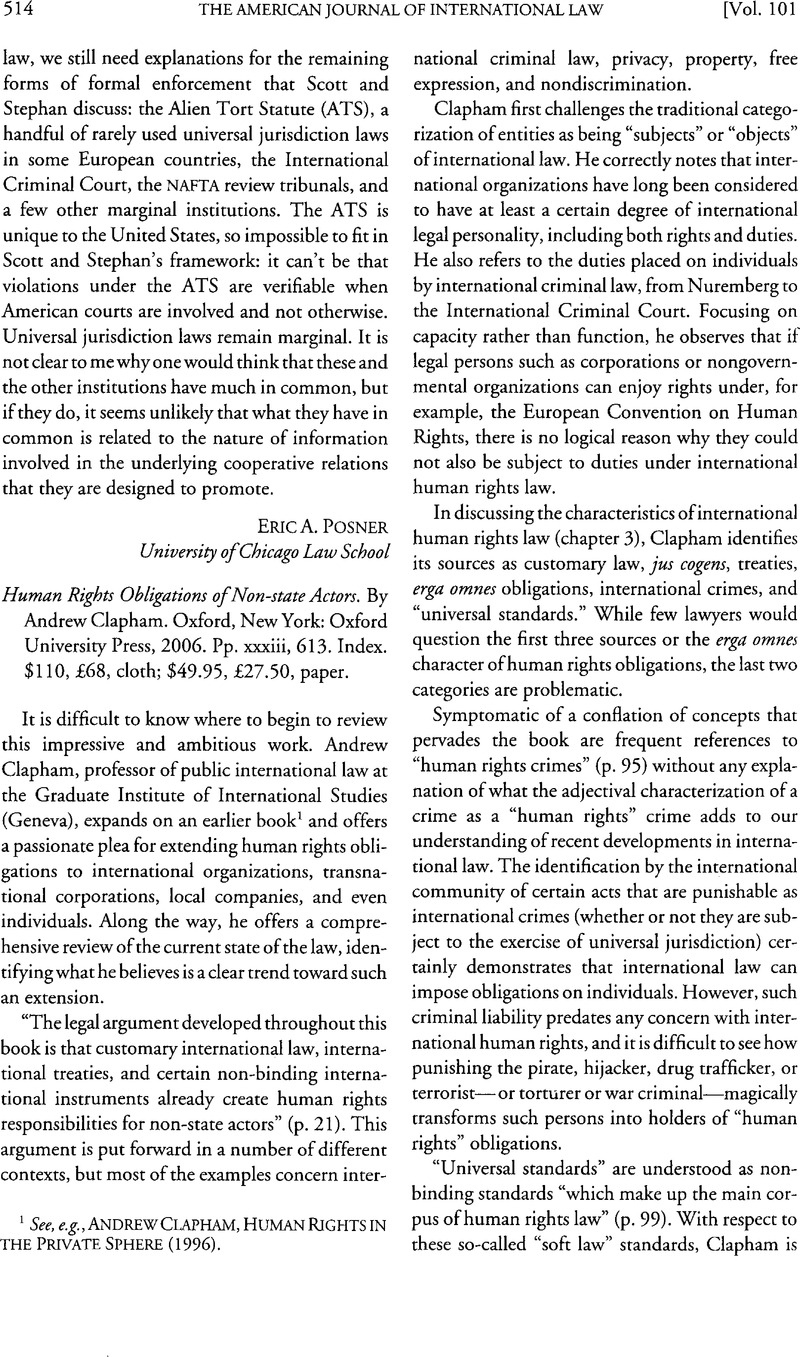Published online by Cambridge University Press: 27 February 2017

1 See, e.g., Andrew, Clapham, Human Rights in the Private Sphere (1996).Google Scholar
2 Compare Human Rights Committee, Issues Relating to Reservations Made upon Ratification or Accession to the Covenant or the Optional Protocols Thereto, or in Relation to Declarations Under Article 41 of the Covenant, General Comment No. 24, UN Doc. CCPR/C/21/Rev.l/Add.6 (1994), with, e.g., US Observations on the General Comment, quoted in Harris, D. J., Cases and Materials on International Law 825 (2004)Google Scholar (The Human Rights Committee “asserts in a wholly conclusory fashion that a number or propositions are customary international law which, to speak plainly, are not.”).
3 Interim Report of the Special Representative of the Secretary-General on Human Rights and Transnational Corporations and Other Business Enterprises, para. 59, UN Doc. /EN.4/2006/97 (2006) [hereinafter Interim Report].
4 Id., para. 68.
5 28 U.S.C. §1350(2000).
6 Interim Report, supra note 3, para. 62.
7 Clapham does note (p. 14 n.38) that a recent authoritative study on humanitarian law, Henckaerts, J.-M. & Doswald-Beck, L., Customary International Humanitarian Law, Vol. I: Rules (2005)CrossRefGoogle Scholar, “mysteriously” rejects the argument that human rights law applies to insurgents.
8 Bankovićv. Belgium, App. No. 52207/99, Eur. Ct. H.R2001-XII, para. 75 (2001) (grand chamber).
9 The Court held that the bombing did not fall within the states’ jurisdiction, although it maintained its earlier jurisprudence that a state is responsible for extraterritorial violations of human rights when the territory in question is under that state’s “effective control.” See, e.g., Loizidouv. Turkey, App. No. 15381/89, Eur. Ct. H.R. 1996-VI (1996).